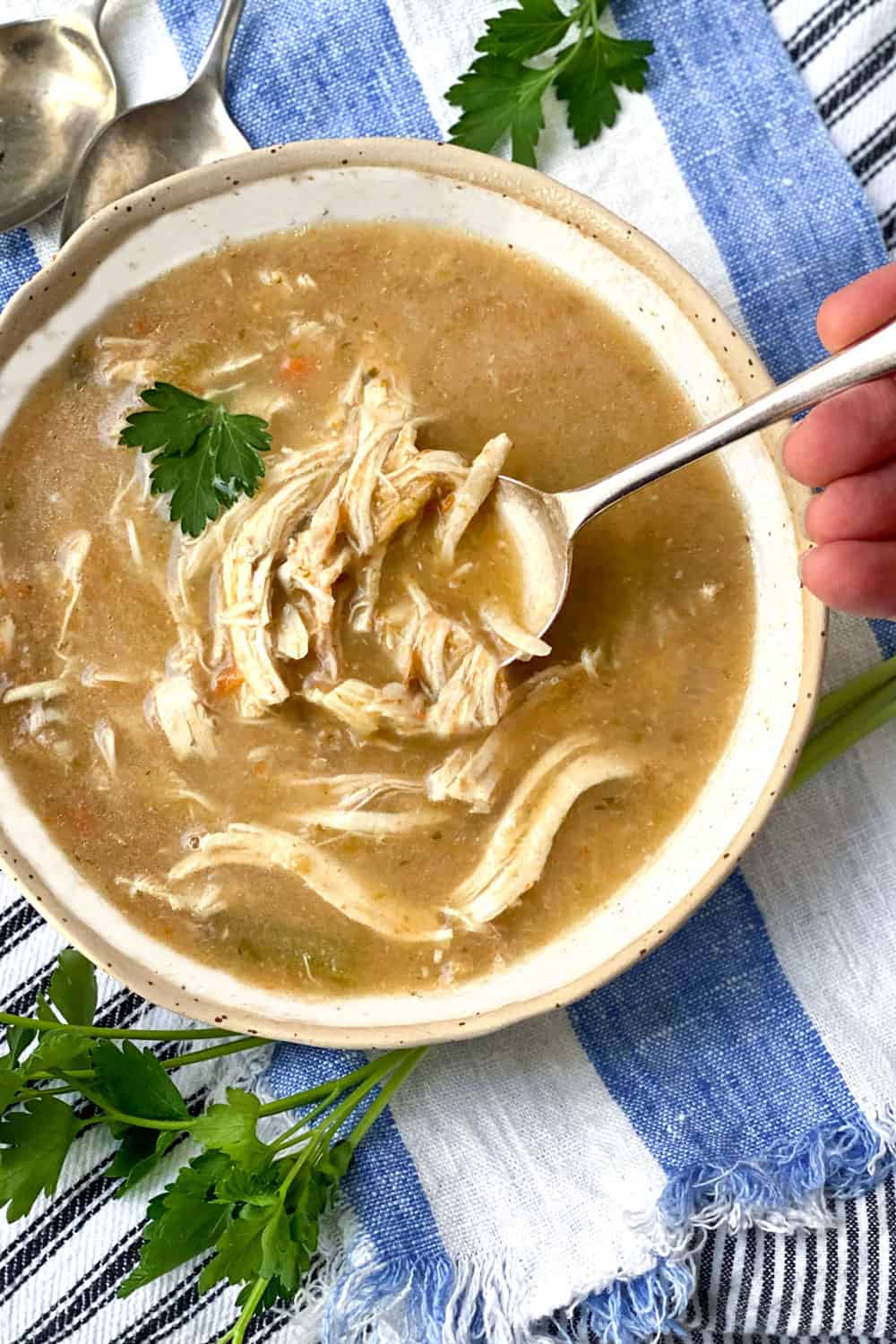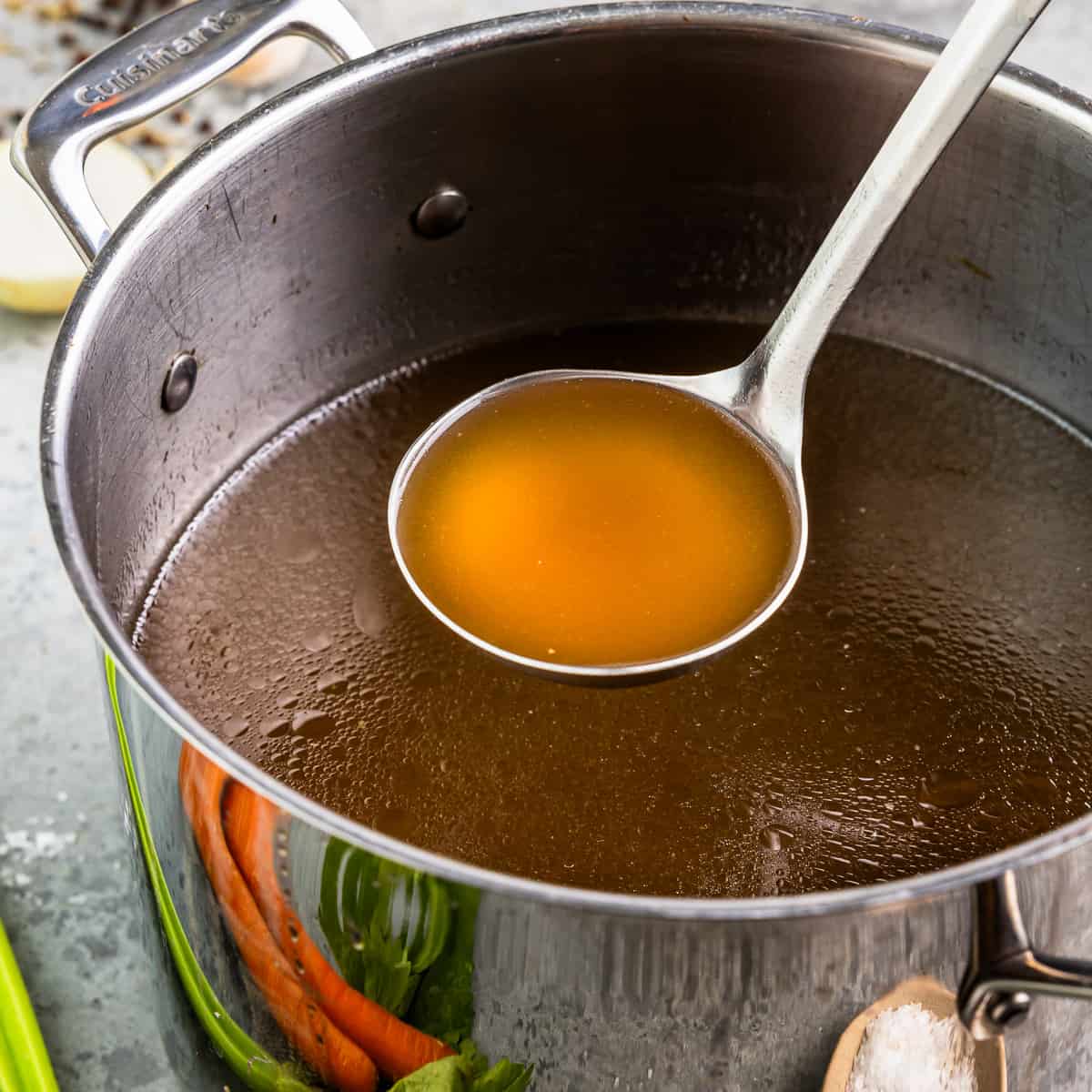The Ultimate Guide to Enjoying and making Organic Bone Broths in the house
Bone broth has gained focus for its many wellness advantages and cooking flexibility. Crafting natural bone broth at home allows people to manage the high quality of active ingredients, guaranteeing a nourishing outcome. Comprehending the selection of bones, essential flavoring components, and proper food preparation strategies is essential. As the process unravels, one might wonder exactly how to boost their brew beyond the basics and incorporate it into daily meals for improved flavor and nutrition.
Recognizing the Health And Wellness Benefits of Bone Broth
Bone brew has actually been a staple in various cuisines for centuries, its health advantages have actually acquired substantial attention in current years. Rich in collagen, amino acids, and minerals, bone broth is frequently touted for its possible to sustain joint health and wellness, improve digestive tract function, and enhance skin flexibility. The gelatin stemmed from prepared bones may aid food digestion and assistance secure the gut lining, possibly relieving problems like dripping digestive tract syndrome.Furthermore, the visibility of nutrients such as glucosamine and chondroitin may add to reduced inflammation and pain relief in joints. In addition, bone broth is moisturizing and can function as a healthy base for soups and stews. Numerous proponents likewise claim that it improves the body immune system, thanks to its mineral account. In general, the rebirth of rate of interest in bone brew is connected to its regarded capacity to promote general well-being and support different physical features.
Picking the Right Bones for Optimum Taste and Nourishment
What variables should one take into consideration when picking bones for broth prep work? The kind of bones utilized significantly impacts both flavor and dietary worth. First, it is crucial to choose bones that consist of a mix of marrow bones, joint bones, and meaty bones. Marrow bones offer healthy fats and abundant flavors, while joint bones contribute collagen, enhancing the brew's nutritional profile.Additionally, sourcing bones from grass-fed or pasture-raised animals assurances greater top quality and even more nutrients, as these pets are normally healthier. The freshness of the bones is also crucial; selecting bones from local butchers or farmers' markets can ensure perfect flavor. Bone size matters also; bigger bones release more gelatin, causing a richer brew. Ultimately, considering the type of animal-- fish, beef, or poultry-- can influence the last taste, allowing for versatile brew options customized to specific choices.
Crucial Components for a Delicious Bone Broth

Quality Bone Option
The structure of a delicious bone broth exists in the mindful choice of premium bones. Sourcing natural, pasture-raised or grass-fed bones is important, as these choices are most likely to be without unsafe ingredients and provide superior nutrients. Selections such as beef, hen, or lamb bones each impart distinctive flavors and health advantages. Bone types, consisting of marrow bones, knuckle bones, and oxtails, contribute jelly and collagen, boosting the brew's structure. Selecting bones with a mix of meat and connective cells can likewise add richness and deepness. Furthermore, picking bones with noticeable marrow assures a nutrient-dense brew, elevating the general quality. Ultimately, investing time in top quality bone option prepares for a delicious and nourishing brew.
Fragrant Flavor Enhancers
Picking top quality bones sets the phase for a healthy and abundant bone brew, but it is the addition of fragrant flavor enhancers that truly elevates the recipe. Active ingredients such as onions, garlic, and carrots not only impart sweet taste but additionally contribute deepness to the broth. Fresh herbs like parsley, thyme, and bay leaves add an aromatic note, while spices such as black peppercorns and cloves introduce warmth and intricacy. Additionally, including a splash of apple cider vinegar can assist extract minerals from the bones, enriching the broth. These taste boosters produce an unified mix, transforming an easy broth right into a mouthwatering foundation for soups, sauces, or stews, making it a functional component in any type of culinary collection.
Step-by-Step Guide to Making Bone Broth at Home
Creating bone brew in the house can be a gratifying cooking undertaking that boosts both flavor and nutrition in various meals. To start, one should choose high-quality bones, ideally from organic or grass-fed sources. Roasting the bones at 400 ° F for concerning thirty minutes can escalate the taste. Next off, transfer the baked bones to a large pot or sluggish cooker and cover them with chilly water. Adding a dash of vinegar assists extract minerals from the bones.Include fragrant veggies like onions, carrots, and celery for included depth, together with natural herbs and spices as desired. Bring the mix to a boil, then minimize to a simmer. It is important to allow the broth simmer for a minimum of 12 hours, though longer is more suitable for maximum splendor. Stress the broth with a fine-mesh filter and shop it in impermeable containers, prepared to raise dishes with its healthy essence.
Tips for Perfecting Your Bone Brew Simmer
While simmering bone broth, preserving the best temperature and timing is important for attaining a rich and delicious result. A mild simmer, ideally between 190 ° F and 210 ° F, helps remove optimum nutrients and tastes without steaming, which can make the broth cloudy. It is advisable to keep track of the pot very closely, changing the warmth as required to keep this simmer.Timing is likewise essential; a longer simmer, commonly ranging from 12 to 2 days, permits much deeper taste extraction and collagen launch. For poultry bones, a 12 to 24-hour simmer suffices, while beef bones profit from longer cooking times.Additionally, skimming any foam or contaminations that increase to the surface area throughout the first couple of hours can improve the broth's quality and taste. Guaranteeing the pot is covered throughout simmering aids to keep dampness and escalate the tastes, making for a more gratifying end product.
Imaginative Ways to Use Bone Brew in Your Food preparation
Incorporating bone brew right into different dishes boosts both flavor and dietary value. Chefs and home chefs alike find that making use of bone broth as a base for stews and soups enhances deepness and splendor, transforming basic dishes into passionate dishes. It can also be utilized in risottos, where the broth changes water, enabling the grains to absorb its mouthwatering essence.Additionally, bone brew offers as an outstanding cooking liquid for grains like quinoa or rice, infusing them with nutrients and taste. For an included spin, it can be utilized in braising meats, resulting in tender, delicious outcomes. Also sauces gain from a splash of bone broth, enhancing their preference profile.Moreover, bone brew can be incorporated right into shakes for an unexpected health and wellness increase, supplying protein and nutrients without jeopardizing preference. These innovative applications display the adaptability of bone brew in day-to-day food preparation, making it an important kitchen staple.
Saving and Preserving Your Home Made Bone Broth
Appropriate storage and conservation of homemade bone brew is vital for maintaining its taste and nutritional benefits. Freezing techniques and refrigeration finest methods play a vital function in extending the brew's shelf life. Understanding these methods can help find out this here guarantee that the Organic Bone Broths broth continues to be risk-free and scrumptious for future use.

Freezing Techniques Explained
Cold strategies are essential for efficiently saving and preserving homemade bone broth, ensuring its abundant tastes and nutrients stay undamaged for future usage. To ice up bone brew, it is a good idea to allow it awesome completely prior to transferring it to storage space containers. Glass jars, silicone molds, or durable fridge freezer bags appropriate options. When making use of jars, leave room at the top for expansion throughout cold. Portioning the broth into smaller sized amounts allows for simple thawing and decreases waste. Tag containers with the date and components for easy recognition. For peak high quality, take in the icy broth within three to 6 months - Chicken Broth. Thawing can be carried out in the fridge or by utilizing a microwave, ensuring that the broth is heated extensively prior to intake
Refrigeration Best Practices
While several emphasis on cold as a technique of preservation, refrigeration also plays a necessary function in keeping homemade bone broth properly. When cooled down, bone broth must be transferred to impermeable containers, guaranteeing very little air direct exposure to stop putridity. It is recommended to more helpful hints refrigerate brew within 2 hours of cooking to preserve its top quality. Generally, homemade bone brew can be saved in the refrigerator for approximately 5 days. Identifying containers with dates can assist track freshness. For peak taste and safety, brew should be reheated to a rolling boil before consumption. If longer storage is called for, cold continues to be an excellent alternative, yet appropriate refrigeration methods assure that bone brew remains nourishing and tasty for short-term usage.
Frequently Asked Questions
Can I Use Frozen Bones for Making Bone Broth?
The question of utilizing frozen bones for bone broth arises regularly (Bone Broth Delivery). Specialists concur that icy bones can be made use of efficiently, however they need to be defrosted before cooking to guarantee suitable flavor and nutrient removal
For How Long Can I Shop Homemade Bone Brew?

Is It Safe to Reheat Bone Brew Multiple Times?
Reheating bone brew numerous times can pose security worries - Beef Broth. Each reheating cycle raises the threat of microbial growth. It is recommended to reheat only as soon as and store any kind of leftovers without delay to assure security and high quality
Can I Include Vegetables to the Broth for Flavor?
Adding vegetables to broth improves flavor and dietary value. Usual choices include carrots, onions, and celery. The veggies instill their significance right into the brew, creating a richer and a lot more full-flavored final product.
What's the Ideal Method to Thaw Frozen Bone Broth?
To defrost icy bone brew, one can put it in the fridge over night, make use of a microwave on reduced warmth, or immerse the sealed container in cozy water, making certain even defrosting without jeopardizing taste or nutrients. It is essential to choose bones that include a mix of marrow bones, joint bones, and weighty bones. Marrow bones supply healthy and balanced fats and rich flavors, while joint bones contribute collagen, improving the brew's nutritional profile.Additionally, sourcing bones from pasture-raised or grass-fed pets guarantees greater quality and even more nutrients, as these pets are typically healthier. Bone types, including marrow bones, knuckle bones, and oxtails, add jelly and collagen, improving the brew's texture. Picking high-quality bones sets the stage for a nourishing and rich bone broth, but it is the enhancement of fragrant taste enhancers that really raises the meal. Even sauces profit from a sprinkle of bone brew, enhancing their taste profile.Moreover, bone brew can be incorporated right into shakes for an unforeseen health boost, providing healthy protein and nutrients without compromising taste.
Comments on “Meal Prep Hacks: Maximize Nutrition with Organic Bone Broths”